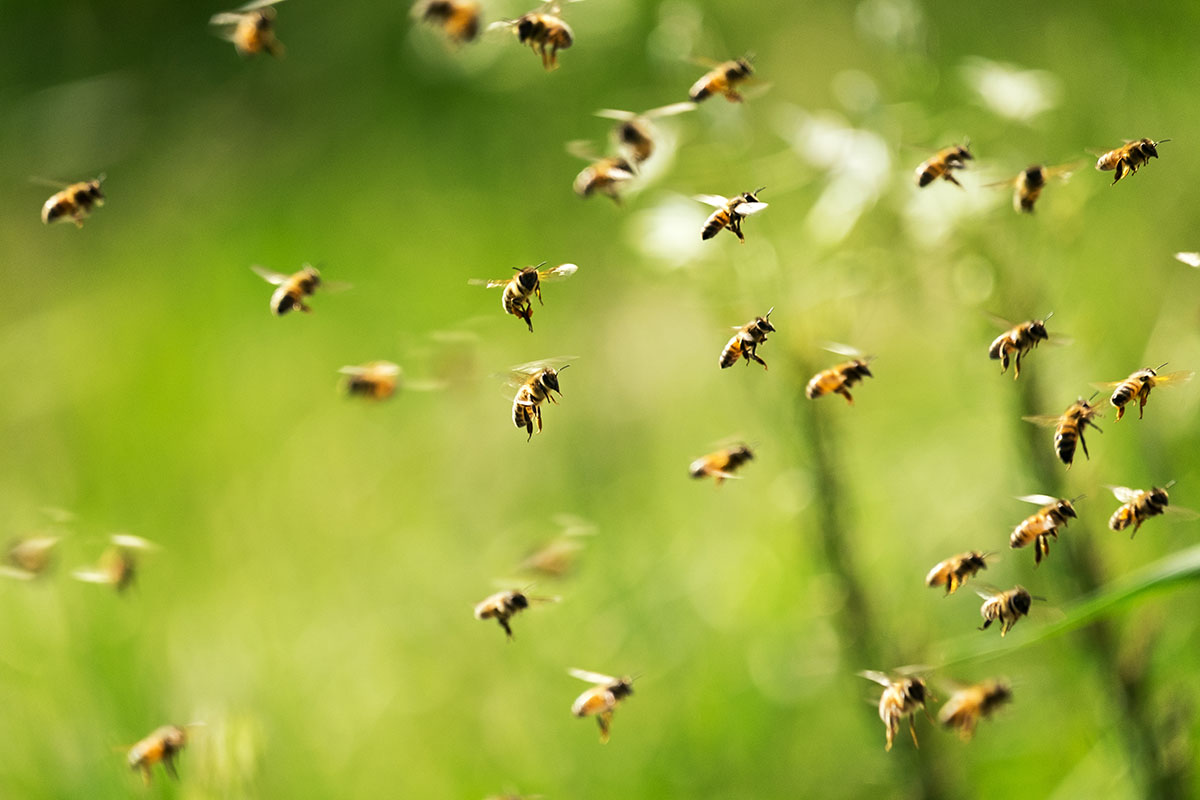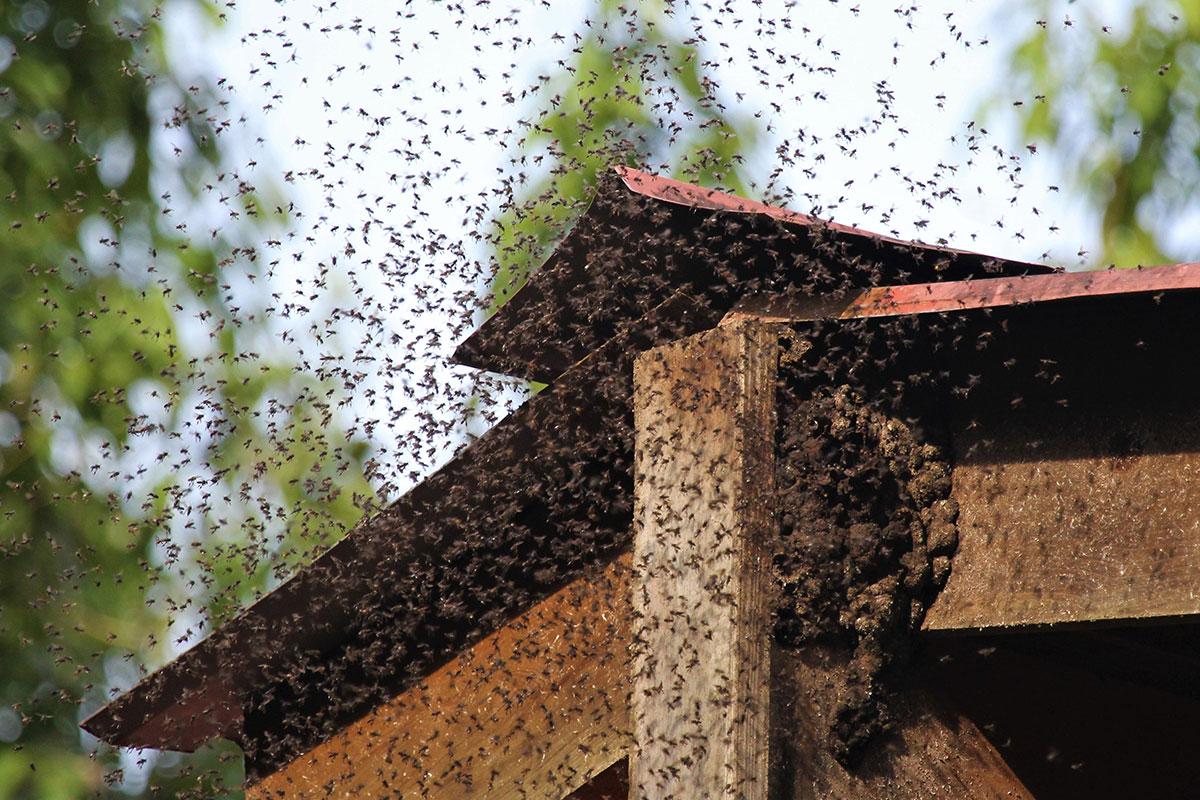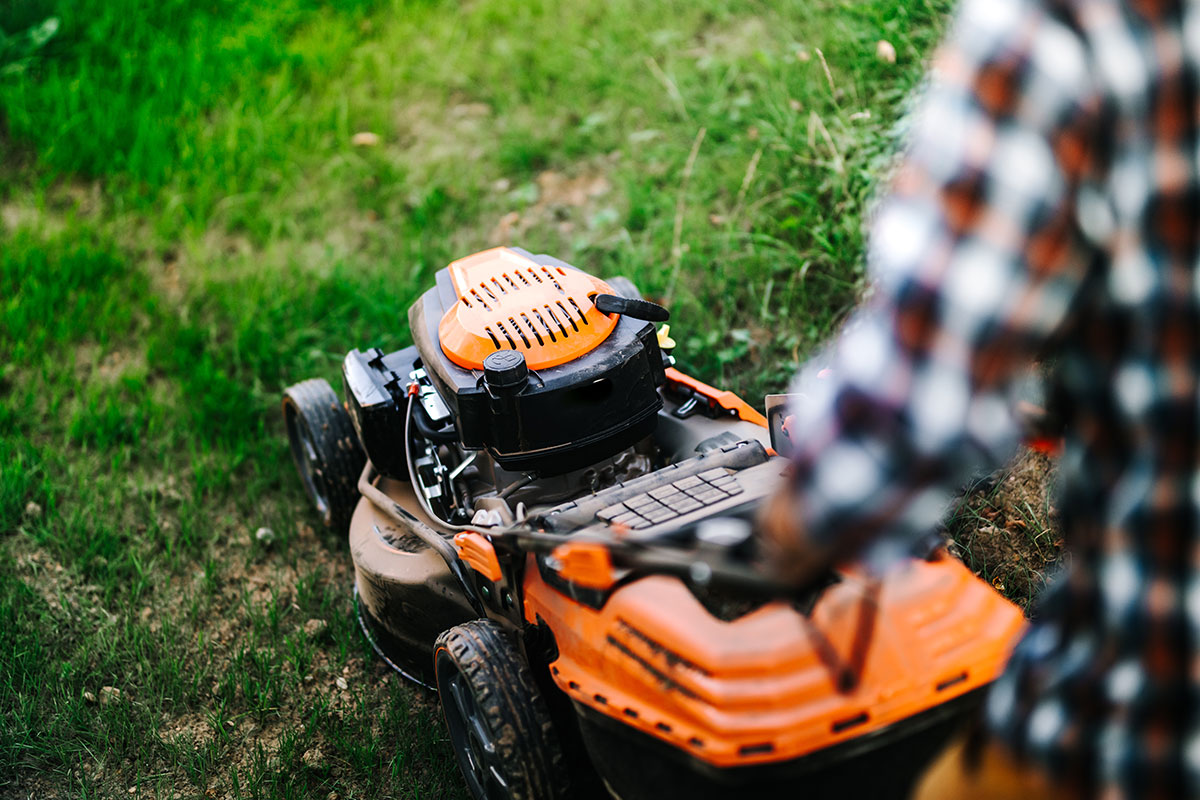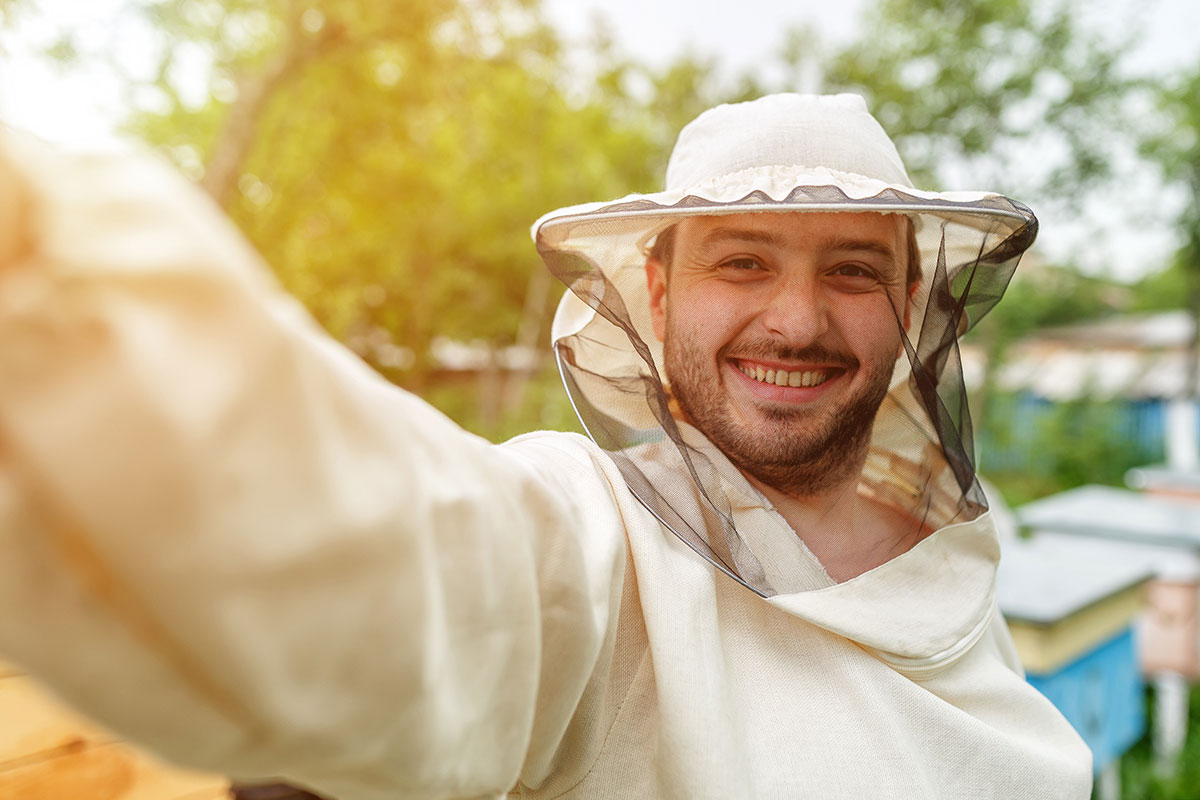Bee Protection & Control
Bee Control Program
If you are a resident of the District:
CALL (800) 825-3400
to report bees or yellow jackets.
CALL 911
if you have a bee emergency.
What If I Discover a Swarm or Colony?
Do This
- Avoid the area and keep children and pets away.
- Remain calm and quietly retreat until bees are out of sight.
- Use your arms and hands to protect your face and eyes from stings if forced to run.
- Quickly take shelter in a car or building.
- Call a professional for bee control or removal.
Not This
- Disturb or tease bees by shooting, spraying water, or throwing rocks at them.
- Panic – call a professional to control or remove bees.
- Douse bee colonies with chemicals or use aerosol pesticides – this will irritate them.
- Attempt to shelter in water or thick brush – these do not offer adequate protection.
How Can I Be Proactive About Bee Safety?

Be Alert
- Be alert when participating in all outdoor activities.
- Listen for buzzing indicating a colony or swarm of bees.
- Look for bees flying back and forth in a straight line.
- Do not disturb a colony or swarm – contact a professional.

Use Care
- Be careful when entering sheds or outbuildings where bees may be established.
- Examine work area before using lawn mowers, weed cutters, and other power equipment.
- Examine areas before tethering or penning pets and livestock.
- Develop a safety plan for your home and yard.

Build Awareness
- Teach children to be cautious and respectful of all bees.
- Check with a doctor about bee sting kits and procedures if sensitive to bee stings.
- Organize a meeting to inform neighbors about bees to help increase neighborhood safety and awareness.
What Precautions Can I Take While Outdoors?

Yard Care
Honey bees are sensitive to unusual odors and loud vibrations. Attacks frequently occur when a person is mowing the lawn or pruning shrubs and trees and disturbs a colony.
Keep pets and children indoors when using weed eaters, hedge clippers, tractors, power mowers, chain saws, or other power equipment until you are certain that no bee colonies are in the area.

Animals
Keep dogs under control when hiking. A dog bounding through the brush is more likely to disturb bees than one following quietly at your heels.
Stay alert when horseback riding through brush or under low hanging branches where bees may have established a colony.
Keep animals away from apiaries, commercial hives, and bee colonies. Numerous stinging incidents have involved animals either penned or tethered near established hives and colonies.
What Should I Do If I’m Attacked by Bees?
Leave the area quickly if you are attacked by bees. The attack could last until the victim leaves the area.
Cover your face using your hands and arms to protect your eyes and mouth from the bees. Seek shelter inside enclosures where the bees cannot enter such as a car, house, tent, or other building.
Do not jump into water for protection.
What Should I Do If I’m Stung?
Stings in General
- Quickly move to a safe area.
- Remove the stinger or stingers as soon as possible.
- Scrape the stinger out with either a fingernail or credit card if readily available.
- Pulling out the stinger with your fingers is also an acceptable method since research has shown that removing the stinger as soon as possible is more important than the actual method of removal when it comes to minimizing the venom received.
- Wash the sting area with soap and water.
- Apply an ice pack for a few minutes to relieve pain and swelling.
Multiple Stings or the Hypersensitive
- Seek immediate professional medical care.
- Remove as many stingers as you can as soon as possible.
- Count the number of stingers removed. This information will assist medical personnel in treatment.
- Watch for breathing and/or vision difficulties.
How Does the District Control Bees?

Bee Control Program
Africanized honey bee swarms and nests are removed when requested by citizens or emergency response units who feel their safety or the public’s safety is in jeopardy.
After the swarm and/or nest is removed, technicians will set remnant bee traps, if necessary, to collect those bees that were away from the nest. The remnant bee trap will be baited with a pheromone that attracts bees.
The technician will return the following day and remove the remaining bees.